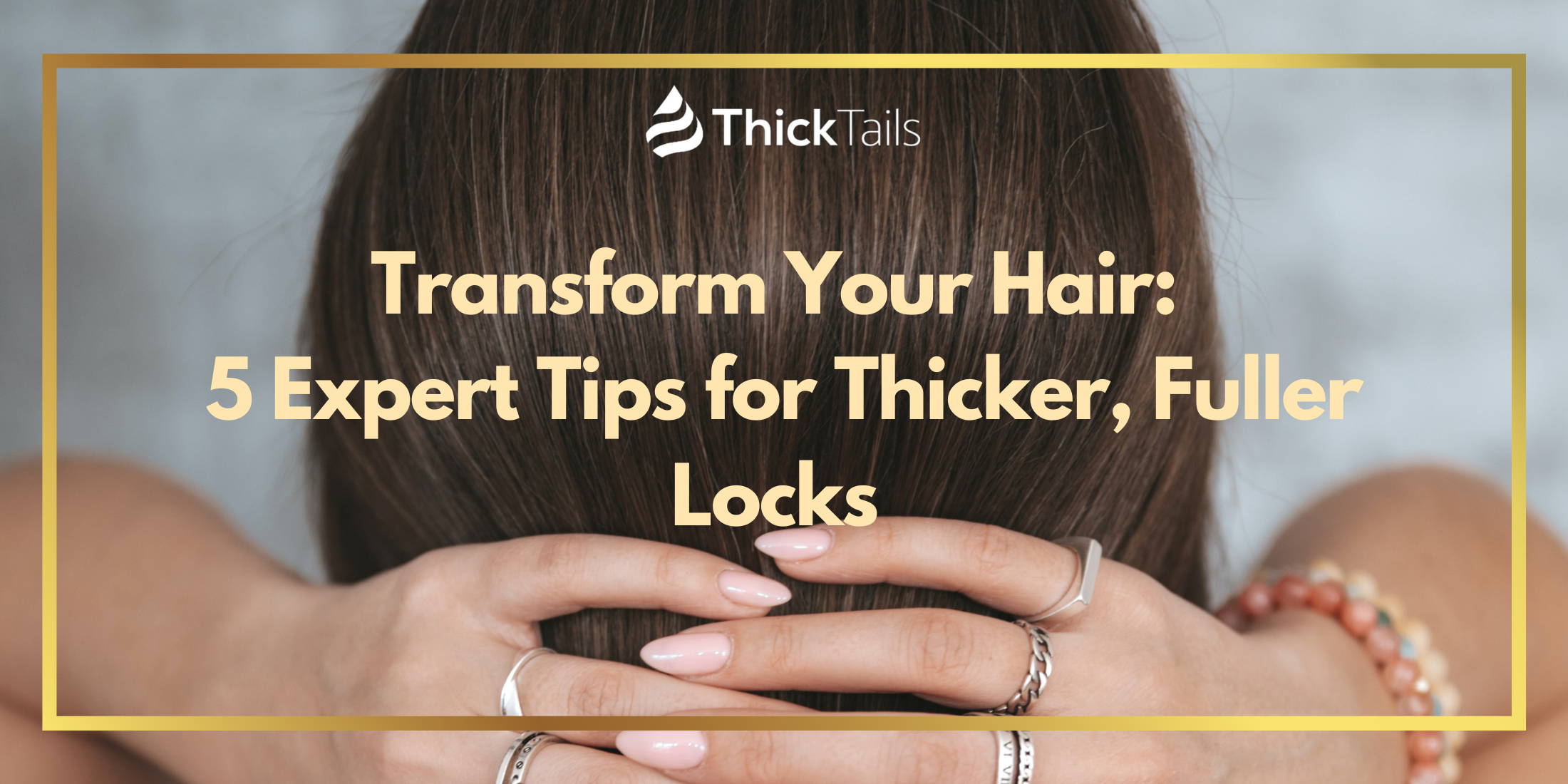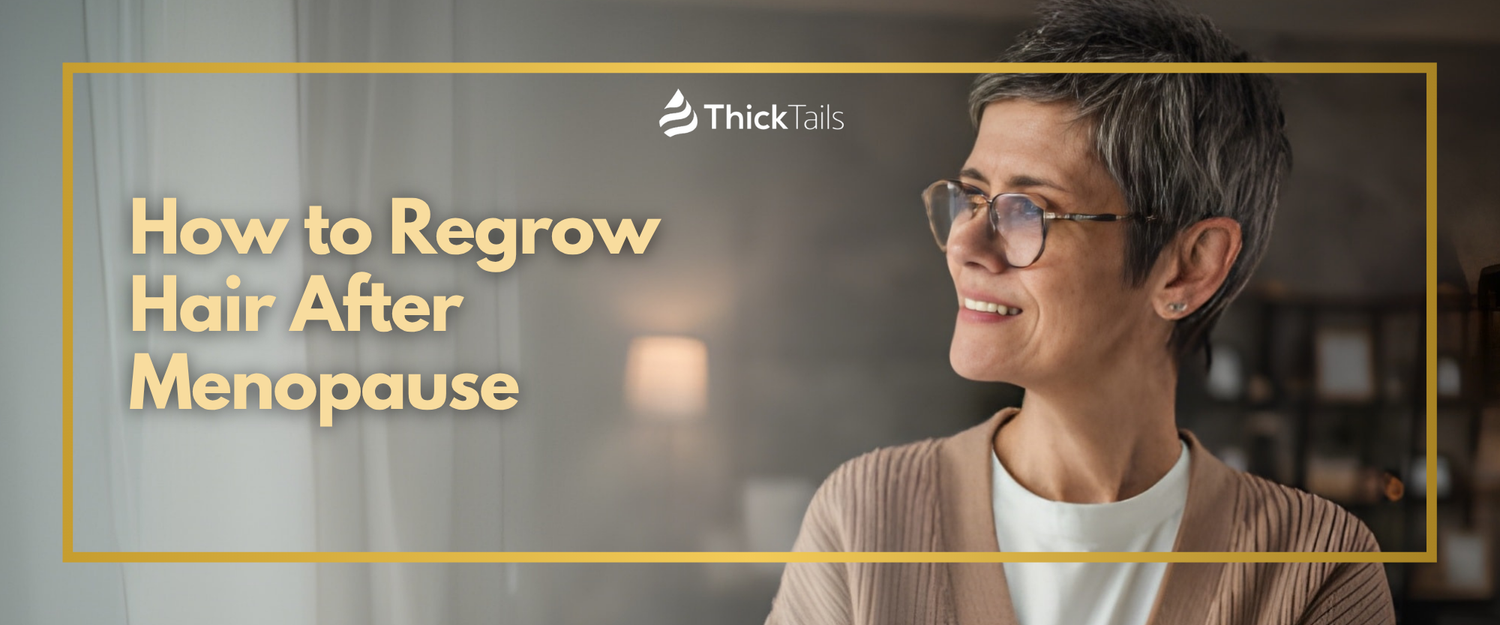As women, our hair can be a source of both pride and disappointment. While we want it to look beautiful, more often than not, hormonal imbalances can leave us with thinning locks or flat strands. During post-menopause stress and postpartum recovery, this problem is even more glaringly obvious—our otherwise thick hair seems suddenly lifeless and dull. Worry not! In this blog post, you’ll find 5 expert tips from top hairstylists that will help you transform your hair into fullness that looks vibrant and healthy. So put aside that disappointment for now because there are easy ways to boost texture no matter the state you’re in right now!
Invest in the right shampoo and conditioner - look for those with natural ingredients that will nourish your hair

Investing in the right shampoo and conditioner is essential for the health of your hair. However, not all products are created equal. When searching for the best shampoo and conditioner, look for those that contain natural ingredients. These ingredients can help nourish and strengthen your hair, leaving you with a healthy and lustrous mane. Some of the top ingredients to look for include keratin, argan oil, and shea butter, all of which help to repair damaged hair and promote growth. Don't be fooled by artificial fragrances and fancy packaging - opt for products with natural ingredients to truly make a difference in the health of your hair.
Try a scalp massage to stimulate the follicles and promote healthy growth
Did you know that a scalp massage can have beneficial effects on your hair growth? Massaging your scalp can stimulate the hair follicles by increasing blood flow to the scalp, supporting the growth of stronger, healthier hairs. Additionally, a scalp massage can reduce stress and tension, which can also promote a healthier scalp and a healthier head of hair overall. It doesn't matter if you do it yourself or have a professional do it, a scalp massage is a relaxing and easy way to give your hair the extra care it deserves. If you're looking to improve the quality and growth of your hair, a scalp massage is definitely worth a try.
Eat foods rich in antioxidants, vitamins and minerals to keep your hair strong
Eating a well-balanced and nutritious diet is essential for maintaining healthy hair. Foods that are rich in antioxidants, vitamins, and minerals play a crucial role in promoting strong and lustrous hair. Antioxidants help to protect hair from damage caused by harmful free radicals, while vitamins and minerals provide essential nutrients that keep hair strong and resilient. Some of the best foods to incorporate into your diet include leafy greens, berries, nuts, and fish. By making small changes to your diet and choosing the right foods, you can give your hair the nourishment it needs to shine bright and stay strong.
Avoid heat styling tools like flat irons or curling wands as this can damage the hair shafts
Have you ever noticed that after using a flat iron or curling wand, your hair feels dry and brittle? That's because these heat-styling tools can actually damage the hair shafts. When the temperature of the tool exceeds the temperature of the hair, it causes the cuticle layer to open up, exposing the fragile inner fibers of the hair. This can lead to split ends and breakage over time. To avoid this, it's best to limit the use of heat styling tools and opt for more gentle hair styling techniques. If you do use these tools, make sure to use a heat protectant spray and keep the temperature at a lower setting. This way, you can still achieve the look you want without sacrificing the health of your hair.
Incorporate regular trims into your routine to get rid of split ends and encourage new growth

Regular trims are essential for maintaining healthy hair. Split ends can cause damage and breakage, leading to slower hair growth and an overall lackluster appearance. By incorporating regular trims into your routine, you can get rid of split ends and encourage new growth. Not only will this help your hair to look and feel healthier, but it can also prevent further damage from occurring. Keep in mind that how often you need to trim your hair will depend on your individual hair type and texture, but a good rule of thumb is every six to eight weeks. Don't be afraid to consult with your stylist to determine the best trim schedule for you.
It's important to remember that while these tips will help you keep your hair healthy, there is no one size fits all answer when it comes to having the right hairstyle. Everyone's hair type and texture is different, and in order to find the right style for you, it may take some trial and error. Taking the time to invest in quality hair care products, eating a balanced diet for optimal nutrition, avoiding heat styling tools and regularly trimming away split ends will ensure your locks look their best. By following these simple steps on a regular basis, you'll have gorgeous locks in no time.








